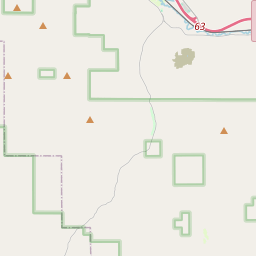Idaho's 1st Railroad
Historical marker location:
Inkom, Idaho
( Marker is on Old Highway 91 (Grant Road) near Old Highway 30 West (Business Interstate 15), on the left when traveling north.)







© OpenStreetMap contributors
The Snake River that runs through Idaho played a crucial role in the development of the state. The river was used to transport goods and supplies, and it was also used to generate hydroelectric power, which helped to fuel the state's growth and development.
About Bannock County
Bannock County Timeline
Bannock County, located in southeastern Idaho, has a rich history that dates back thousands of years. The area was initially inhabited by Native American tribes, including the Shoshone and Bannock tribes, who utilized the region's abundant natural resources for survival. In the early 19th century, European explorers and fur trappers arrived, establishing trade routes and interactions with the native populations.
The first permanent settlement in the area was established in 1864 when the Oregon Short Line Railroad was constructed through present-day Pocatello. This led to increased immigration and the establishment of small farming and mining communities. In 1878, Bannock County was officially created, named after the Bannock Native American tribe.
During the late 19th and early 20th centuries, Bannock County experienced significant growth and development. The arrival of the Utah and Northern Railroad in 1879 further stimulated economic growth, attracting businesses and industries to the area. Agriculture, including cattle and sheep ranching as well as wheat and potato farming, became major industries in the county. The establishment of several mining towns, such as Gibsonville and Arimo, fueled the region's economy as well.
The growth of Bannock County was also influenced by the establishment of educational institutions. In 1901, the Idaho Technical Institute (now known as Idaho State University) was founded in Pocatello, becoming an important center of education and research. The county's population continued to increase throughout the 20th century, leading to the expansion of infrastructure and services.
Today, Bannock County remains a thriving area with a diverse economy that includes agriculture, manufacturing, education, and healthcare. The county's history is celebrated through various historical sites and museums. The ongoing growth and development in Bannock County are a testament to its resilient past and promising future.
The first permanent settlement in the area was established in 1864 when the Oregon Short Line Railroad was constructed through present-day Pocatello. This led to increased immigration and the establishment of small farming and mining communities. In 1878, Bannock County was officially created, named after the Bannock Native American tribe.
During the late 19th and early 20th centuries, Bannock County experienced significant growth and development. The arrival of the Utah and Northern Railroad in 1879 further stimulated economic growth, attracting businesses and industries to the area. Agriculture, including cattle and sheep ranching as well as wheat and potato farming, became major industries in the county. The establishment of several mining towns, such as Gibsonville and Arimo, fueled the region's economy as well.
The growth of Bannock County was also influenced by the establishment of educational institutions. In 1901, the Idaho Technical Institute (now known as Idaho State University) was founded in Pocatello, becoming an important center of education and research. The county's population continued to increase throughout the 20th century, leading to the expansion of infrastructure and services.
Today, Bannock County remains a thriving area with a diverse economy that includes agriculture, manufacturing, education, and healthcare. The county's history is celebrated through various historical sites and museums. The ongoing growth and development in Bannock County are a testament to its resilient past and promising future.
Bannock County Timeline
This timeline provides a concise overview of the key events in the history of Bannock County, Idaho.
- 1834: First Euro-American explorers, led by Nathaniel Jarvis Wyeth, passed through the area
- 1843: The Oregon Trail was established, bringing more settlers to the region
- 1863: Bannock County was officially established
- 1878: The town of Pocatello was founded and quickly became the county seat
- 1882: The first railroad arrived in Pocatello, boosting the town's growth
- 1890: Idaho became the 43rd state of the United States
- 1917: The newly constructed Fort Hall Indian Reservation opened within Bannock County
- 1930s: The Great Depression impacted the local economy, but federal projects like the Pocatello Air Base helped stimulate growth
- 1963: The Fort Hall Casino was established, bringing economic opportunities to the area
- 1990s: Pocatello experienced urban renewal efforts and diversification of its economy